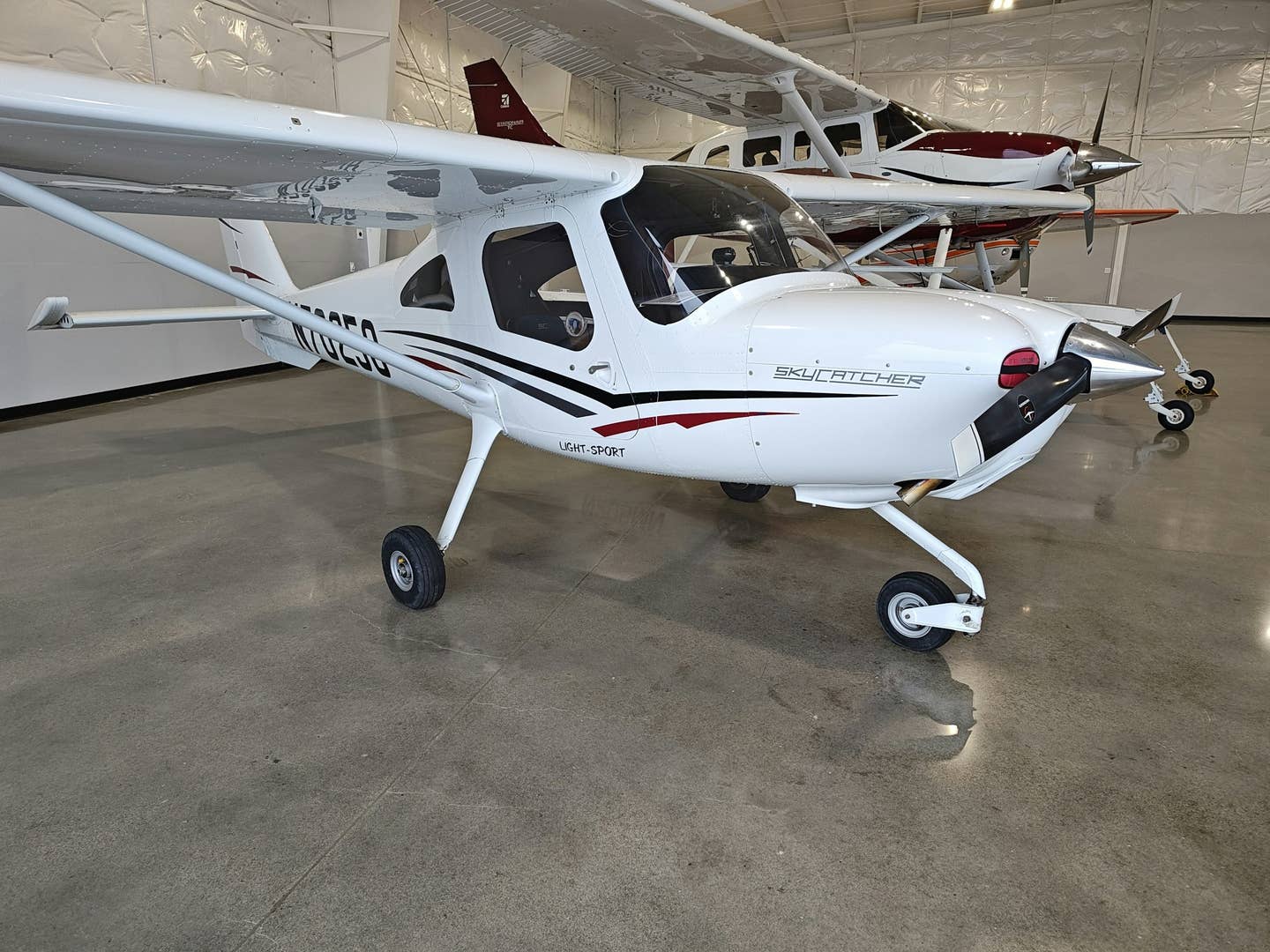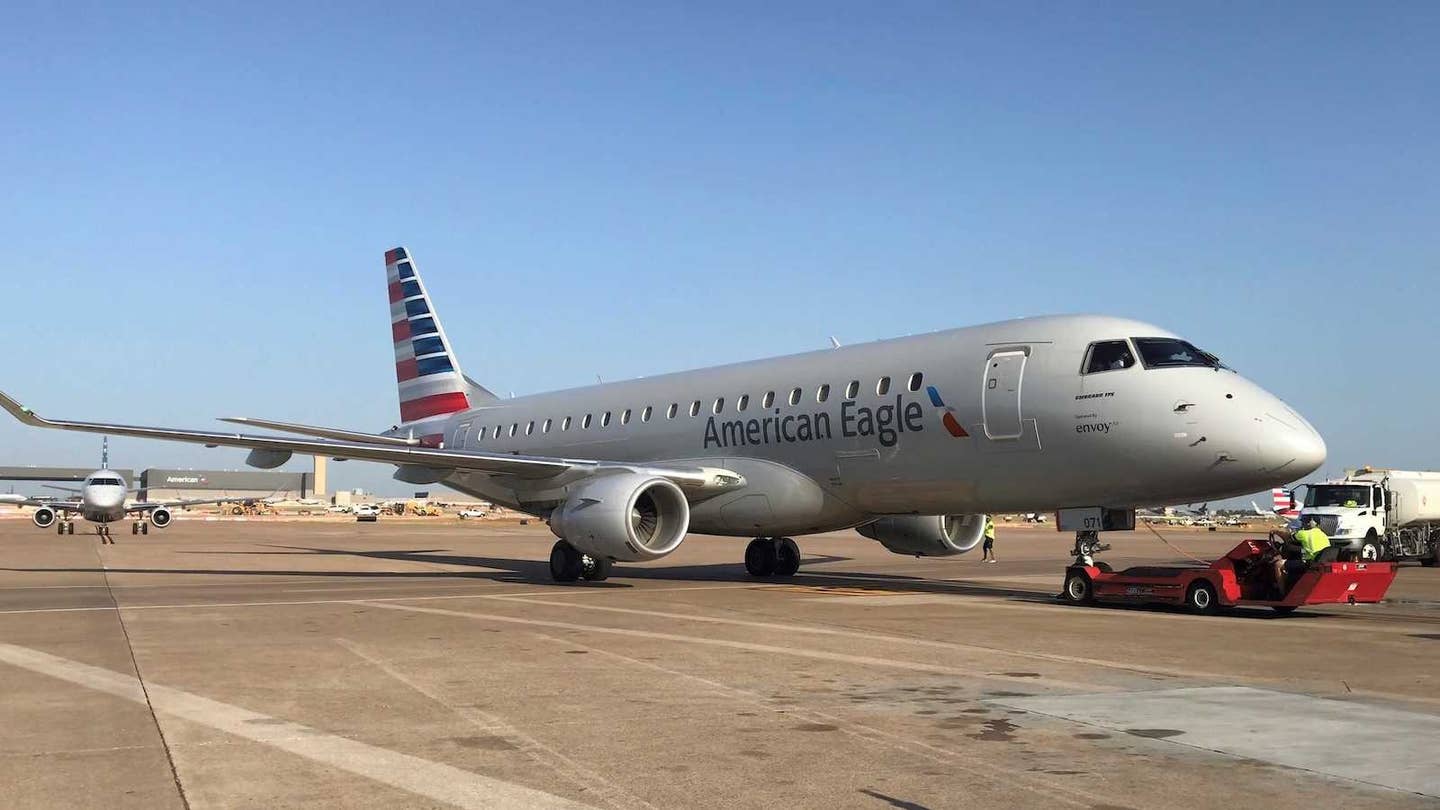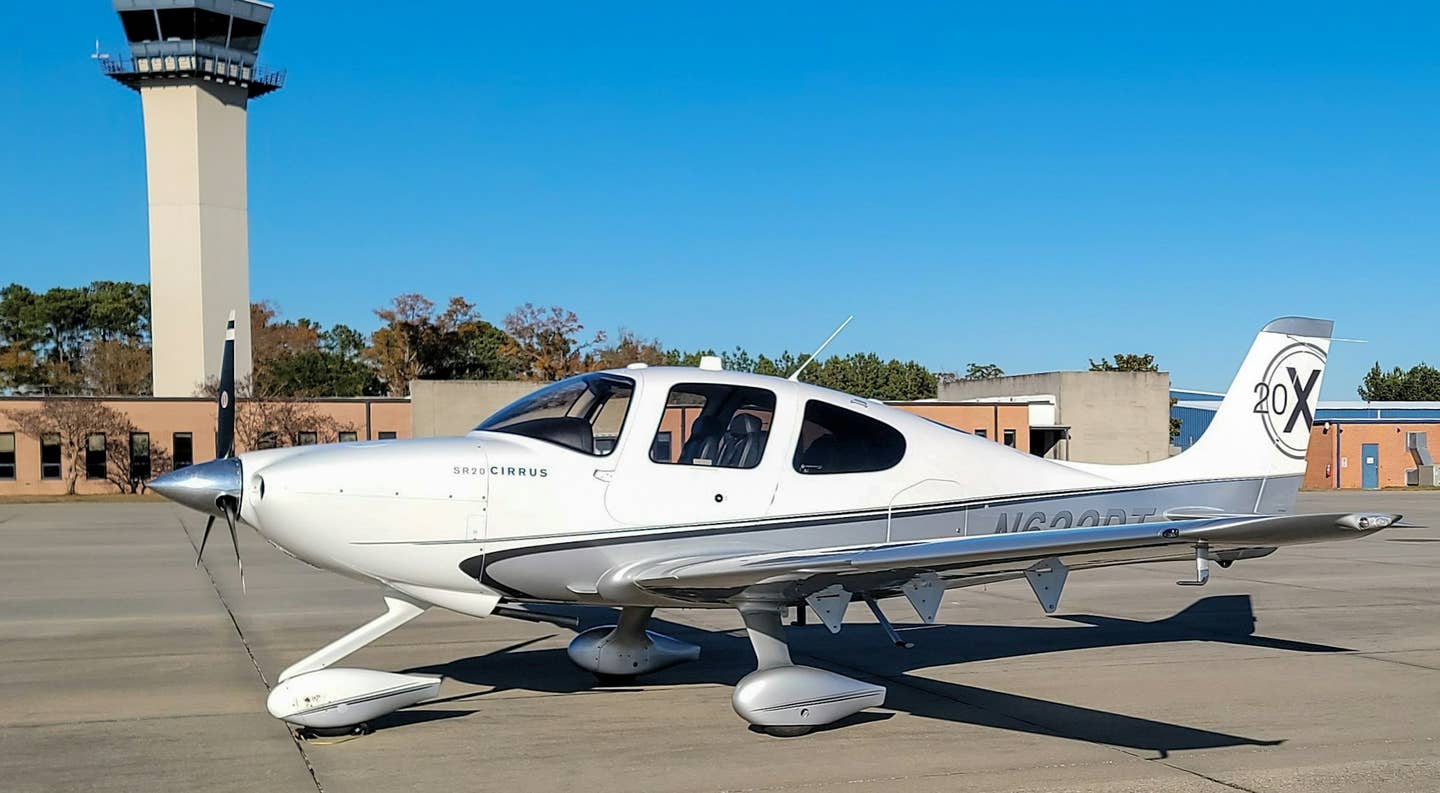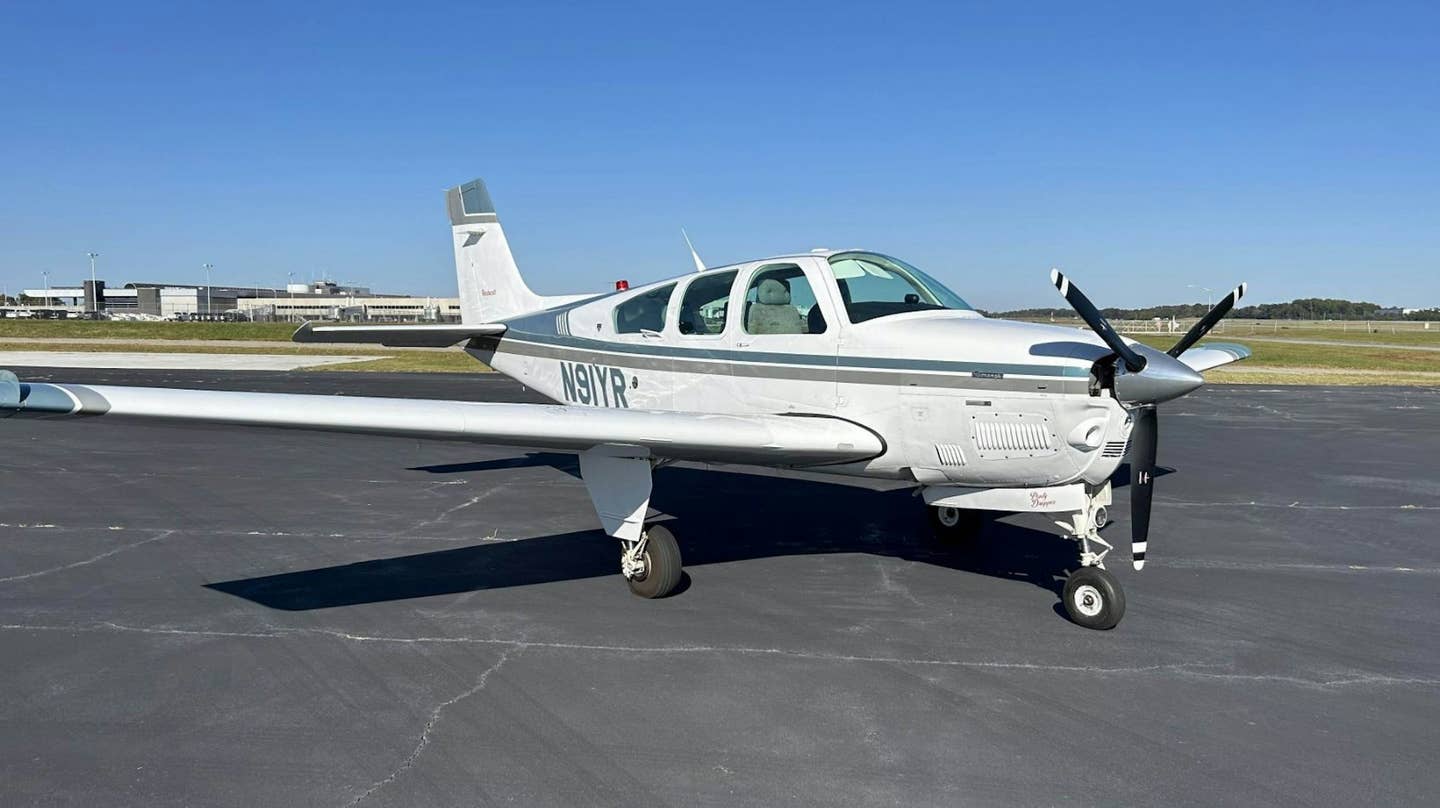
Alas, poor Yorick! The owner of a
murdered starter adapter contemplates
his options: Climb more slowly, buy
another lightweight starter, or go on a diet.
JUNE 2010 — Experience is the best teacher. Too bad she's so mean.
I knew that my battery was slowly dying, but I was trying to put off buying a new one — two, actually, since my homebuilt, which has a 28-volt electrical system, uses a pair of Yuasa motorcycle batteries in series. After all, the airplane was still starting, however listlessly the starter turned the prop.
It was just as I was leaving to give a talk to an EAA chapter in San Luis Obispo, California, about an hour north of Los Angeles, that the ever-more-languid starter finally failed to make it through a compression stroke. I got the airplane going with my Dogpatch start cart, which consists of a mechanic's creeper supporting some ancient car batteries, transformers and rectifiers, a rheostat, a voltmeter and an incomprehensible tangle of wires. I had a friendly passerby drag the cart back into my hangar for me and lock it up. He didn't take a thing.
I stayed overnight at San Luis. The next morning, my host, Kurt Colvin, who teaches engineering at California Polytechnic State University, drove me to the airport. The engine (surprise!) would not turn over. The Jet Center sent its start cart — this time, a real one with a noisy engine and 300 amps. I expected the engine to spin like mad, but instead, puzzlingly, it just barely dragged itself around. It did start, however, and I flew back to Los Angeles resigned to finally dropping a few bucks for new batteries.
When I shined a flashlight into my batteries, I could see that their cells were distorted by an accumulation of black lead sulfate. I reasoned that their rotten condition somehow explained the lack of starting moxie even under practically infinite external power. This made no sense whatever, but desperation breeds stupidity.
I bought a couple of batteries. They came dry, and the instructions — which I must have ignored the last couple of times I bought batteries — were emphatic that, once they had been filled with battery acid, the fluid should be replenished with water, not more acid. Well, whaddya know! I had always thought I was doing my batteries a big favor by topping them with genuine battery acid, but it turns out that that just increases the sulfuric acid concentration and hastens their demise. As often happens to me, once I learned this, I found out that everybody else already knew it.
In response to an account of these events on the website melmoth2.com, where I go into excessive detail about my airplane, a couple of people suggested that I might do well to get something called a battery "tender" or "maintainer." This is a sort of glorified trickle charger, equipped with sufficient intelligence to maintain just the right potential in the battery to keep it from deteriorating during periods of disuse. It turns out that people who use their recreational vehicles, like boats or motorcycles, only sporadically or seasonally swear by these things. I got a couple and built a socket into the underside of my cowling so that I could hook them up to the batteries without having to open the cowl. Incidentally, charging the batteries with two 12-volt chargers in parallel — that is, one connected to each of the batteries — has the benefit of correcting voltage imbalances that can occur when you use two 12-volt batteries in series to make one 24-volt one.
I charged the batteries for a couple of days, until both maintainers were steadily showing their little green "all done!" lights. I rolled the airplane outside to try it out.
The engine would still barely turn over. But it made a whirring sound.
Paul Lipps, who makes strange-looking high performance propellers for race airplanes and is a fertile source of ideas about practically anything, suggested that there might be a corroded connection somewhere in my starter wiring. The circuit is, well, circuitous, going through the master relay and the starter relay on the way to the starter. Any connection, including ones inside the relays, could be at fault. He told me how to locate the fault: You measure the voltage between a battery terminal and each connection in the circuit while cranking the starter; the difference is the difference in electrical potential between the two probes, and it should not be more than a small fraction of a volt in a clean system. You're looking for a place where the indicated voltage suddenly goes up to a volt or two. I jury-rigged a switch so that I could crank the starter while standing beside the battery, and, proceeding gingerly in fear that if I touched an alligator clip to the wrong place I would vaporize it and part of a finger or two in the bargain, I tested everything. I found no difference greater than a quarter of a volt.
Finally, I described my problem to a kindly nearby A&P (airframe-and-powerplant) mechanic, Kevin Schiff. You may wonder why I didn't do this first rather than last. It has something to do with the spirit of homebuilding: One should never take the easy way out.
"You have a lightweight starter?" he asked.
Indeed.
It is a common problem, he explained. Lightweight starters use fast-spinning permanent-magnet motors and steep gearing to achieve high torque. Some models, when they are not energized, cannot be turned by hand. The starter engagement mechanism in many Continental Motors engines, including my TSIO-360, consists of a coil spring that tightens around a shaft. When the starter stops turning, it's expected to freewheel, and the spring is supposed to relax and release its grip. It's an ingenious system, but if the starter doesn't freewheel, it keeps the spring rubbing on the spinning shaft, eventually wearing both until the spring can no longer grip the shaft tightly enough to turn the motor over at all. Hence, the whirring sound and the stationary propeller.
It seems to me that either the engine manufacturer or the starter manufacturer, or both, might have been expected to anticipate and avoid this incompatibility. After all, they are experts.
Once again, it turned out that a lot of people already knew what I had just learned. There was plenty of discussion of it online, and one of my airport neighbors, Claude Morgan, who has a beautiful Swift with the same type of engine as I have, said that he had had the same problem and had reinstalled his original 16-pound starter after a lightweight model had ruined his starter clutch.
I took the starter adapter off the engine and had it rebuilt by Pacific Continental Engines, which is conveniently situated about 1,000 feet from my hangar. The guys there said they see this problem all the time. One of them suggested that a trash can would be a good place to store my lightweight starter.
I learned from the website of the manufacturer of my lightweight starter had added an electromagnetic clutch to newer models so that they freewheel when not energized. That change should eliminate the problem of starter clutch wear. At five pounds or so, the lightweight starters are an attractive alternative to the original item, which one online authority claims, perhaps facetiously but I'm not sure, is from a 1938 Buick. I called the company to ask what kind of deal it would make me on a later model. It wasn't bad: $250, plus my present lightweight starter, for which I would receive a $100 core credit. The retail price of the unit is somewhere north of $600, so this was just a bit over half price. Sort of a qualified act of contrition.
Time for Fun With Arithmetic.
Let's see — the lightweight starter originally cost $500 or so. The bill for the clutch rebuild was $815. (In a well-intentioned effort to soften the blow, they told me that it would have been $715 if only the clutch shaft had not been so badly worn.) To this add $350 to get a Mark 2 lightweight starter that won't ruin the starter clutch a second time. That brings us up to $1,665. Plus a few dollars for extra fuel consumed by the task of grinding away the shaft and the spring. (I think I left my EAA hosts at San Luis Obispo holding the bag for the start cart, so I'll omit that.)
On the plus side, the weight saving of 11 pounds works out to a reduction in cruising fuel flow of 0.01 gallon — about one ounce — per hour and an increase of 15 fpm, or three inches per second, in climb rate. Over the 400 hours that it took the starter to lunch the clutch, I saved at least four gallons of fuel, conservatively valued at $18. The net cost of the weight reduction, therefore, would be only $1,647, or $149.73 a pound. Cheaper than truffles.
That reminds me. Maybe I should just go on a diet and take the 11 pounds off myself.

Sign-up for newsletters & special offers!
Get the latest FLYING stories & special offers delivered directly to your inbox






